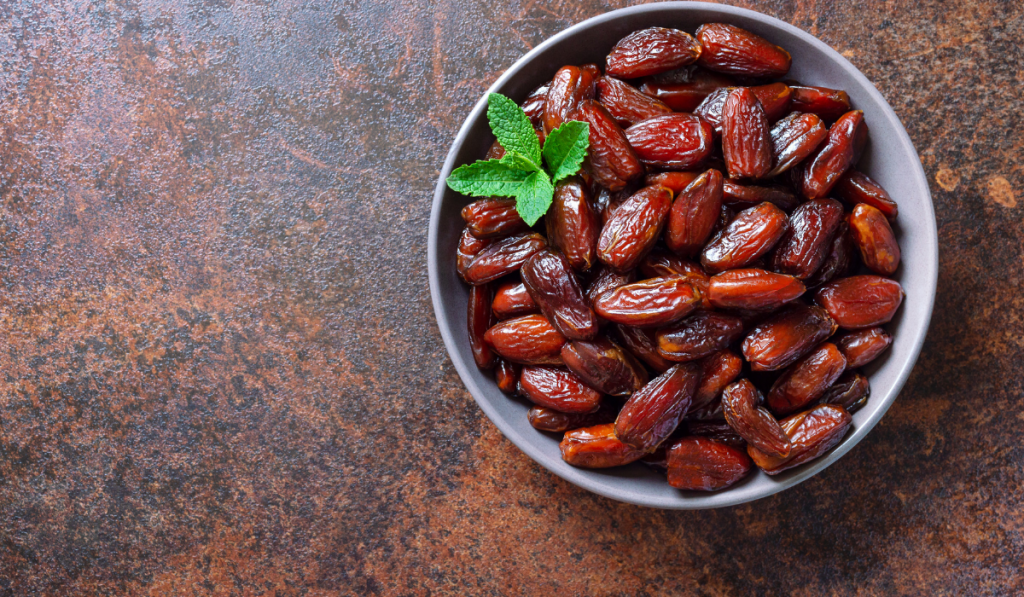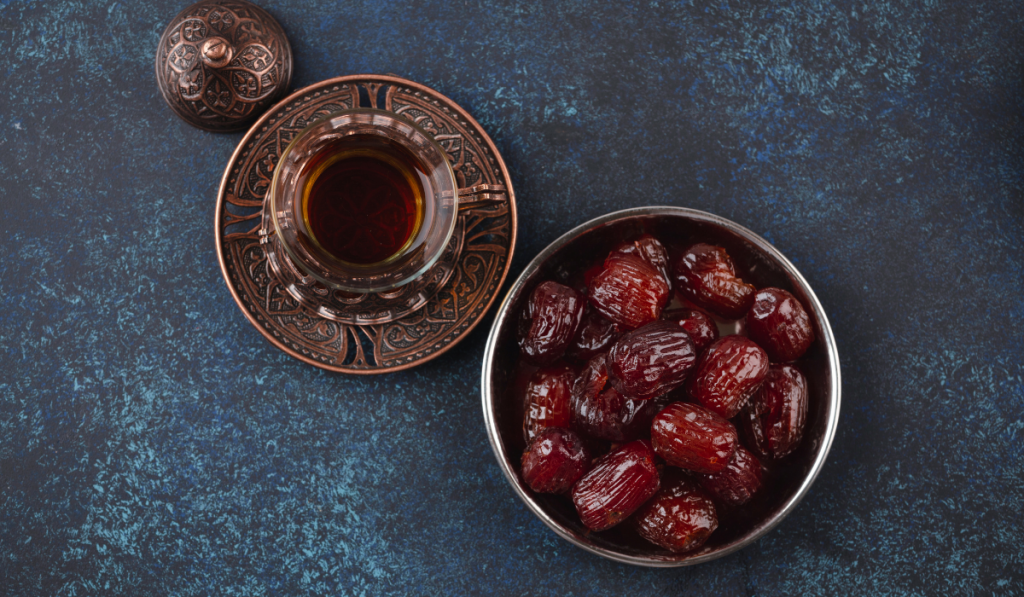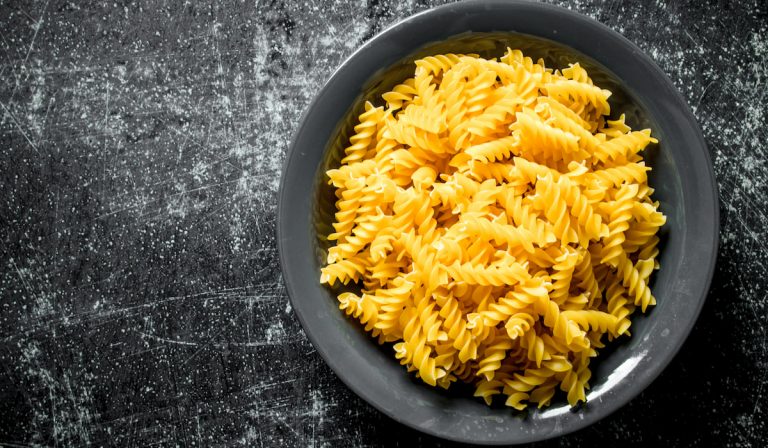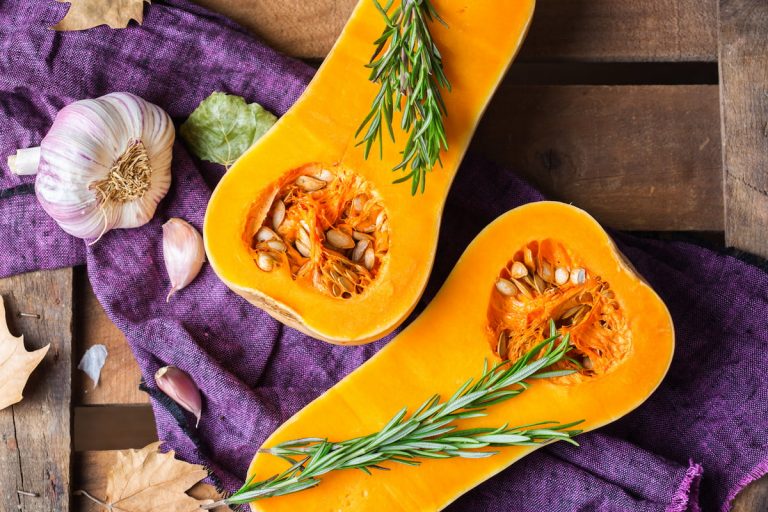Are Dates Paleo? (Read To Know!)
The rise of the paleo diet has impacted people’s lifestyles, especially for anyone who is looking to eat healthy.
This ancient or Stone Age diet was founded by a gastroenterologist, Walter Voegtlin, but popularized in our modern world by an anthropology professor named Dr. S. Boyd Eaton.
The core of the paleo diet is to incorporate as much healthy food as you can and cut out the bad ones, especially processed food. These healthy foods include lean meats, fish, healthy fats, and many vegetables and fruits.
There are a lot of healthy fruits that are considered paleo-friendly. So can you include dates in that list?
Are dates paleo?
Just like most dried fruits, dates are considered paleo. However, you should eat them in limited amounts due to their high sugar content, especially if you’re trying to regulate your blood glucose level.

Before we look at the benefits of eating dates and why you can incorporate them into your paleo diet, let’s look at what dates really are.
What Are Dates?
Dates are one of the oldest cultivated fruits that hail from the Fertile Crescent, the region between Egypt and the Persian Gulf.
Their history can be traced back as far as 8,000 years, particularly in regions such as Syria and Egypt.

In the 18th century and the early 19th century, Spanish travelers brought date palms into the New World. Since then, dates can be found in many tropical parts of the world.
In the United States, dates are primarily cultivated in California and other southwestern regions.
Date palms generally stand between 70 and 75 feet tall, having separate male and female plants that pollinate each other with the aid of wind and insects. It takes between 4 and 8 years for these trees to mature and produce clumps of fruits or dates.
In the Middle East, date palms are considered all-purpose trees, similar to coconut trees in other countries. For instance:
- Dates can be processed into livestock feed.
- Date stones (the pit in the fruit) can be ground, mixed with flour, and turned into delicious bread.
- The wood from date palms can also be used to build houses or any kind of small shelter.

Why Are Dates Paleo?
Dates are categorized as one of the paleo-friendly foods. This is because these dried fruits are naturally cultivated and are edible enough to be eaten raw.
Dates have a long shelf-life and are usually picked when dry and ripe.
There are three stages of date ripeness that will determine the texture of their flesh. These include:
- Khalal stage – In this stage, dates turn from green to red or yellow.
- Rutab stage – In this stage, dates turn brown and are more tender and taste sweeter than in the previous stage.
- Tamar stage – This is the most edible stage of dates. They are sweet and soft.
Aside from their taste, one date that weighs around 8 grams can provide you with a lot of nutrients.
According to the USDA, one 8-gram date can give you:
- 6 grams of carbohydrates
- 0.2 grams of protein
- 0.6 grams of fiber
- 3.4 milligrams of magnesium
- 53 milligrams of potassium
- 0.2 milligrams of sodium
- 0.1 milligrams of iron
- 5 grams of sugars
- 23 calories
- 0 grams of fat

What Are the Benefits of Eating Dates?
Be it as snacks or as part of your daily diet, consuming dates comes with many benefits. For instance:
Dates Are Packed With a Lot of Nutrients
Apart from their delicious taste, dates are packed with vital nutrients.
Other than the nutrients listed previously, these dried fruits contain vitamin B6, vitamin D, phosphorus, and vitamin K. These vitamins help maintain a more robust immune system, and phosphorus facilitates bone health.
Dates Are Rich in Antioxidants
Dates contain three kinds of antioxidants: carotenoids, flavonoids, and phenolic acids.
These substances are naturally based micronutrients that can reduce and protect your body from inflammation. These micronutrients have anti-inflammatory properties and serve to protect your cells from free radicals.

Dates Help Ease Labor
Providing pregnant women with dates as their snacks or as part of their staple diet can help in reducing the length of labor. This is because dates may promote a better dilation of cervical parts during labor.
Dates contain tannins, which are phytochemicals or compounds that increase contractions in pregnant women.
There are also natural compounds in dates that can bind to oxytocin receptors and mimic their effect on women’s bodies. Most of the labor contractions during childbirth are highly related to the level of oxytocin in the mother’s body.
Dates Can Increase Brain Function
To promote good brain health, you can incorporate dates into your daily meals.
Research has shown that dates can reduce inflammatory markers in the brain called IL-6 (Interleukin-6). Higher levels of IL-6 can be found in the brains of Alzheimer’s patients and the brains of those with other neurodegenerative disorders.
Other anti-inflammatory components in dates can also reduce brain inflammation and plaque formation that can disturb neurotransmission between synapses and brain cells.

Dates Are High in Fiber
Like most fruits, dates are also high in dietary fiber. As you already know, fiber is one of the essential nutrients that we all need to live healthily.
Fiber promotes good digestion and prevents constipation. Lack of fiber can reduce the effectiveness of bowel movements, leading to the hardening of the stool.
Eating ¼ cup of dates is more than enough to provide you with 12 percent of your daily fiber requirement.
Dates Are a Healthy Substitute for Refined Sugars
To make your food sweet but healthy, you can use dates to replace processed sugars. With their caramel-like taste, you can turn a cup of dates into a sticky, sweet paste.
Add a cup of water to a cup of dates and blend them well. Always use a 1:1 ratio to create date paste with good texture.

Dates Help Regulate Metabolic Functions
Certain date varieties contain nutrients that help regulate metabolic functions.
For instance, Medjool dates are rich in B-complex vitamins such as folic acid, niacin, and pantothenic acid. These vitamins aid in facilitating better metabolic function while simultaneously increasing your metabolism.
Which Types of Dates Should You Choose?
From one variety to another, dates can be differentiated by their unique taste and texture.
There are three major cultivars of dates that you can find throughout the world. These include soft dates, semi-dry dates, and dry dates.
Some of the common date varieties are listed below.
Medjool Dates
Medjool dates originated in Morocco. They are the most popular date variety sold in many parts of the world.
These dates are dark brown in color and oval-shaped, with a sweet and caramel-like flavor. Some Medjool dates can reach between 3 inches and 4 inches long.

Halawi Dates
These dates are native to the deserts and farmlands of Iraq.
Halawi dates can be recognized by their amber-like skin that appears wrinkler than other varieties. With their soft and sticky texture, they definitely taste sweet.
Iteema Dates
Iteema dates are native to Algeria. Similar to Halawi dates, they are oblong in shape with amber-colored skin. With their large size, you can definitely enjoy their sweet flesh by eating just one or two Iteema dates.

Hayani Dates
These medium-sized, elongated dates can commonly be found in Egypt and are available all year round. They have dark red to black skin with soft and meaty flesh.
Most Hayani dates are sweet with a unique caramel-honey-like flavor.
Migraf Dates
Also known as Mejraf dates, Migraf dates are considered high-quality and are the most popular dates in South Yemen.
Migraf dates are large-sized dates with a sweet taste and a lot of nutritional value. They come in different colors ranging from golden brown to amber.
Barhi Dates
Barhi or “Barhee” dates are named after the Arabic winds called “barh.”
These fragile dates are the smallest variety out of all dates. Barhi dates are quite unique due to their varied taste: caramel, butterscotch, syrup, and brown sugar.
Barhi dates are usually amber before turning golden brown when they ripen.
Maktoom Dates
These large and soft dates are native to the land of Iraq. They have a reddish-brown, thick skin and are less sweet than other varieties.
Maktoom dates are one of the dates that can be consumed by diabetic people or anyone who is looking to monitor their glucose level.
Dayri Dates
Dayri dates are native to southern Iraq. These medium- to large-sized dates are oblong in shape with red or dark brown skin.
Daryi date’s soft flesh will also turn golden brown after being cured or dried.
Aside from their sticky texture, Dayri dates are suitable for anyone who likes moderately sweet food.

Deglet Noor Dates
Also known as “The Mother of all Dates” or “The Royal Date,” Deglet Noor dates hail from Algeria.
These semi-dry dates generally come in medium to large sizes, with a delicate skin texture that turns to dark brown when ripe.
Deglet Noor dates can be incorporated into many recipes and foods with their sweet and flavorful taste.
Saidy Dates
Saidy dates thrive prolifically in the hot land of Libya. These dates have golden-brown skin with chewy and sweet flesh.
In the United States, Saidy dates are primarily grown in California’s Coachella Valley by date farmers and manufacturers.
Kalmi Dates
Kalmi dates are native to Oman. These large and oblong-shaped dates have orange-brown skins that turn light brown when they ripen.
Although they are categorized as dry dates, Kalmi dates are still tasty due to their sweet and caramel-like flavor.

Can You Eat Too Many Dates?
Dates are delicious and packed with different nutrients. But can you eat too many dates in one sitting?
There is no harm in eating these dried fruits and making them your daily snack. However, if you’re trying to monitor your sugar or fructose intake, the best option would be to eat them in restricted portions.
However, if you are healthy enough and trying to cut back on sugar, dates can be a substitute for sweeteners in your diet.
For instance, one Medjool date can yield 16 grams of sugar and 27 calories.
Don’t be alarmed by this number because dates have a low glycemic load, unlike processed or refined sugars. They can’t cause a sudden increase in your blood sugar level.

How to Incorporate Dates Into Your Paleo Diet
If you ask around, most people would think that dates should be eaten dried and raw to get the most out of their flesh.
This is not entirely true.
As a matter of fact, you can eat dates in many ways other than eating them as your staple snacks. Here’s how:

Grind, Blend, and Turn Dates Into Juice
You can either blend a whole cup of dates for one serving of juice or mix two or three dates in your smoothie. Then, serve this tasty drink during breakfast or as your pre-workout drink.
Use Dates as One of the Ingredients for Baking
Dates can be used as an alternative sweetener to replace refined sugars. They can also be used as filling for a cake or as a garnish.
Some of the delicious foods compatible with dates are paleo coconut cream pies, mini pumpkin pies, coconut-rolled date balls, and coconut almond date rolls.
Incorporate these dried fruits when you’re baking!

Use Dates to Make Desserts
Dates can act as binding agents, especially when making desserts. You can replace binding ingredients, such as flour, grains, and sugars, with dates to make healthier paleo foods.
At the same time, dates will replace the sweetness of sugar, making the desserts healthier and sugar-free.
Make a Date Syrup
To make date syrup, all you need are dates, cinnamon, and hot water.
Date syrup has a sticky, caramelized texture that can be mixed with many foods and used as a delicious sweetener.

Final Thoughts
Dates definitely can be incorporated into your paleo diet. You can definitely enjoy these dried fruits as long as they are free from any artificial flavorings and chemicals.
There are many ways to enjoy these healthy and delicious fruits. You can enjoy dates as a snack or eat them with other paleo-friendly foods.
Resources
- https://archive.aramcoworld.com/issue/197802/a.history.of.dates.htm
- https://www.verywellfit.com/dates-nutrition-facts-calories-and-their-health-benefits-4110158
- https://ultimatepaleoguide.com/dates-paleo/
- http://www.surepaleo.com/are-dates-paleo/
- https://paleosafe.org/dates/
- https://paleogrubs.com/date-recipes
- https://foodisgood.com/are-dates-paleo/
- https://7dvariety.com/date-fruit/dates-in-diet/dates-in-paleo-diet/
- https://thepaleodiet.com/how-sweet-it-is-dates-in-the-paleo-diet
- https://www.healthline.com/nutrition/benefits-of-dates
- https://northernnester.com/types-of-dates/







